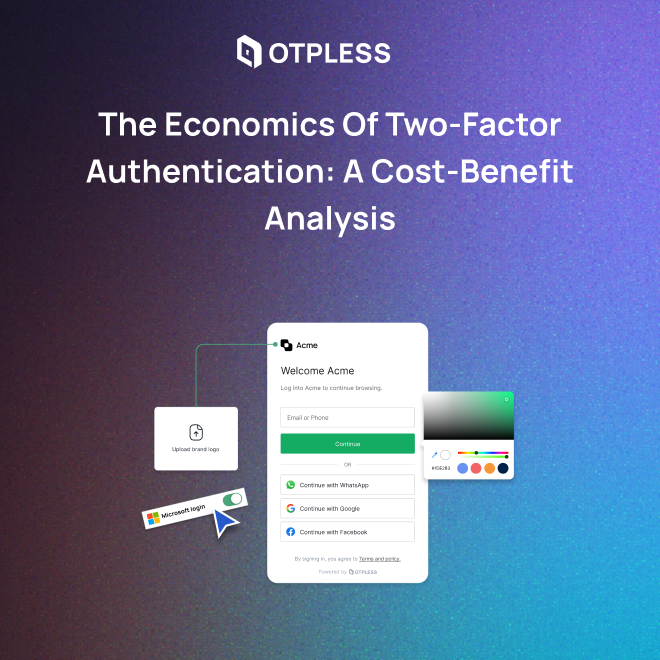Introduction
In today’s evolving cybersecurity landscape, the rise in cyber threats and data breaches calls for robust measures to protect systems and accounts. Two-factor authentication (2FA) has emerged as a popular security measure, requiring users to provide two forms of identification for access. This blog delves into the costs and benefits of 2FA, aiding organizations and individuals in assessing its suitability.
Costs of OTPLESS
Several costs accompany the implementation and maintenance of OTPLESS:
- Hardware and software
- Training
- Ongoing maintenance
- Productivity interruptions
Benefits of OTPLESS
Despite the costs, OTPLESS offers numerous benefits:
- Enhanced security
- Compliance
- Customer trust
- Reduced risk of data breaches
Is OTPLESS Right for You?
While OTPLESS significantly enhances security, it’s essential to weigh its costs against benefits:
- For organizations handling sensitive data or under regulatory requirements, the benefits often outweigh the costs.
- However, the decision hinges on the specific needs and circumstances of each entity.
Other Considerations
- Various OTPLESS methods exist, each with distinct costs and benefits.
- Factors like required security level, data sensitivity, and available resources influence the suitability of OTPLESS.
- Careful evaluation helps in making an informed decision about adopting OTPLESS.
Conclusion
OTPLESS is a valuable security measure offering enhanced protection against unauthorized access. While it incurs costs, the benefits of heightened security, compliance adherence, customer trust, and reduced data breach risks outweigh these expenses. Organizations and individuals can make informed decisions by assessing the costs and benefits of OTPLESS to determine its suitability for their needs.

